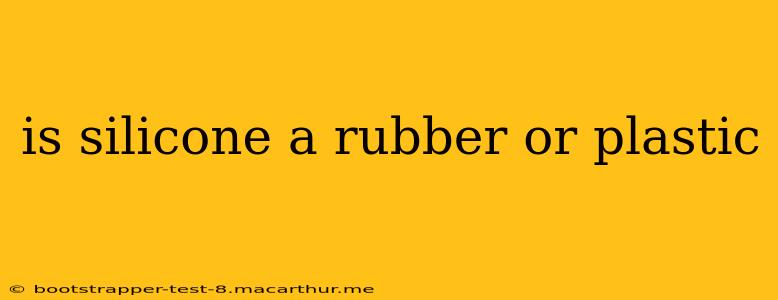Silicone often sparks confusion: is it a rubber, a plastic, or something else entirely? The answer isn't a simple yes or no, as silicone's unique properties blur the lines between traditional classifications. This comprehensive guide will delve into silicone's characteristics, explaining why it's considered neither strictly a rubber nor a plastic, but rather a unique class of material altogether.
What is Silicone?
Silicone, also known as polysiloxane, is a synthetic polymer made from silicon, oxygen, carbon, and hydrogen. Its unique structure, built around a silicon-oxygen backbone, gives it a range of properties unlike traditional rubbers and plastics. This backbone is highly flexible, enabling the remarkable elasticity and heat resistance often associated with silicone.
Silicone vs. Rubber: Key Differences
While silicone shares some characteristics with rubber, such as flexibility and elasticity, key differences set them apart. Natural rubber, for instance, is derived from latex, a natural product. Silicone, on the other hand, is a completely synthetic material. This synthetic nature allows for precise control over its properties, leading to a wider range of applications. Furthermore, silicone exhibits superior heat resistance compared to most rubbers, which tend to degrade at higher temperatures.
Silicone vs. Plastic: Key Differences
Similarly, silicone differs from plastics in several crucial ways. Plastics are typically based on carbon-based polymers, often derived from petroleum. Silicone's silicon-oxygen backbone provides superior heat resistance and chemical inertness compared to most plastics. Plastics also exhibit a broader range of stiffness and rigidity, whereas silicone generally maintains a flexible and elastic nature. While some plastics can be flexible, they rarely possess the same level of elasticity and heat resistance found in silicone.
Is Silicone a Elastomer?
Yes, silicone is considered an elastomer. Elastomers are materials that can be stretched to a significant extent and then return to their original shape. This property is a key characteristic of both silicone and rubber, further highlighting the overlap in some of their physical properties.
What are the uses of silicone?
Silicone's versatile properties lead to its use in a wide array of applications, including:
- Medical Devices: Silicone's biocompatibility makes it ideal for implants, catheters, and other medical devices.
- Cookware: Its heat resistance makes it perfect for baking molds and other kitchen tools.
- Sealants and Adhesives: Silicone's ability to bond to various surfaces makes it a popular choice for sealing and bonding applications.
- Electronics: Its insulating properties are crucial in electronics manufacturing.
- Cosmetics: Silicone is used in many personal care products due to its smooth texture and feel.
What are the advantages of silicone?
The advantages of silicone include:
- High heat resistance: Can withstand high temperatures without significant degradation.
- Low-temperature flexibility: Remains flexible even at very low temperatures.
- Water resistance: Silicone is highly water-resistant, making it suitable for outdoor applications.
- Chemical inertness: Resistant to many chemicals and solvents.
- Biocompatibility: Suitable for use in medical applications.
What are the disadvantages of silicone?
Despite its advantages, silicone does have some drawbacks:
- Cost: Silicone can be more expensive than other materials like rubber or plastic.
- UV Degradation: Prolonged exposure to ultraviolet (UV) light can degrade some silicone products.
- Difficult to bond: While it can bond to some surfaces, it can be challenging to bond to others and require specific primers.
In conclusion, silicone's unique composition and properties distinguish it from both rubber and plastic. While it shares similarities with both, its superior heat resistance, chemical inertness, and biocompatibility establish it as a distinct class of material with an incredibly wide range of applications.
